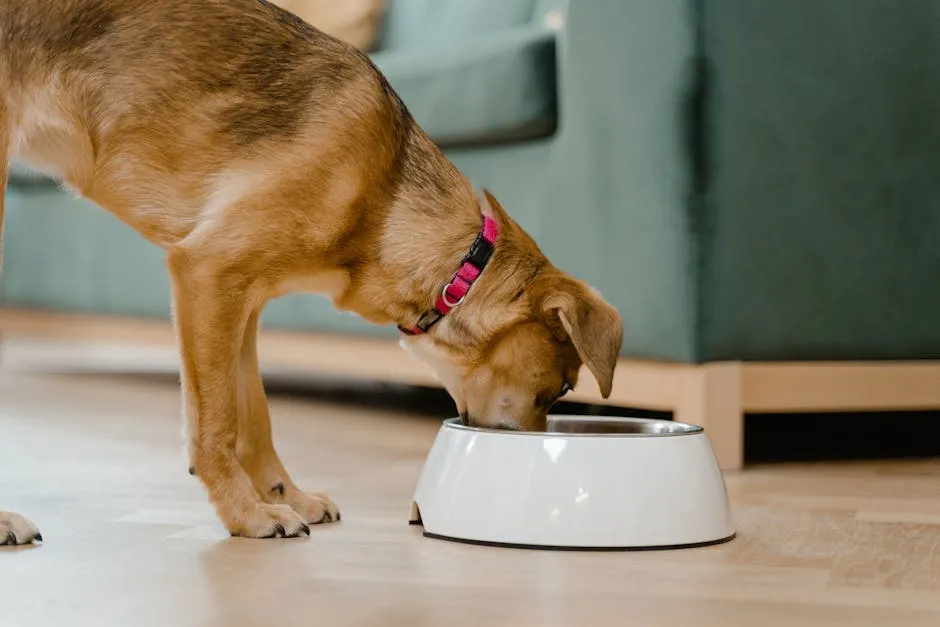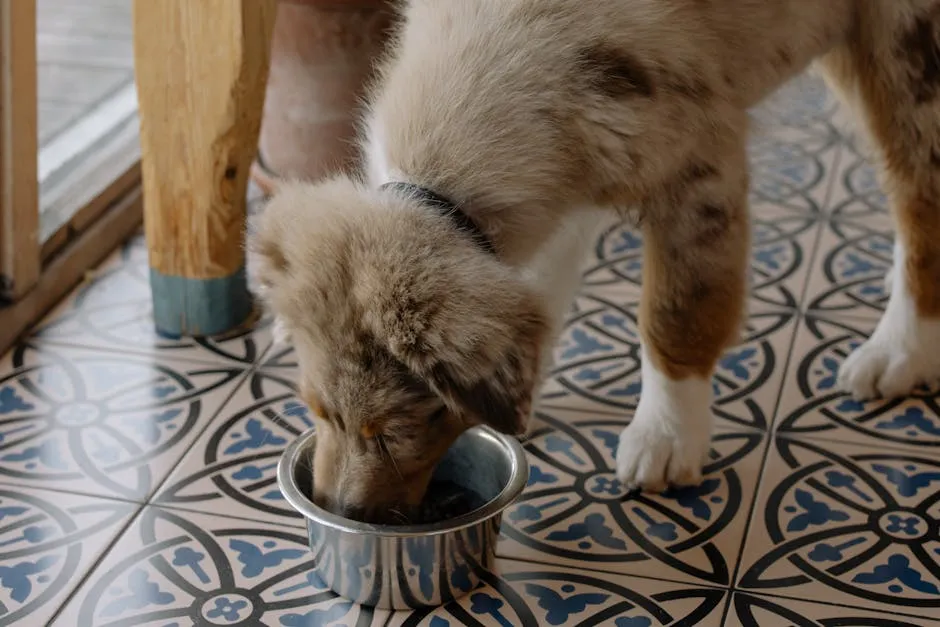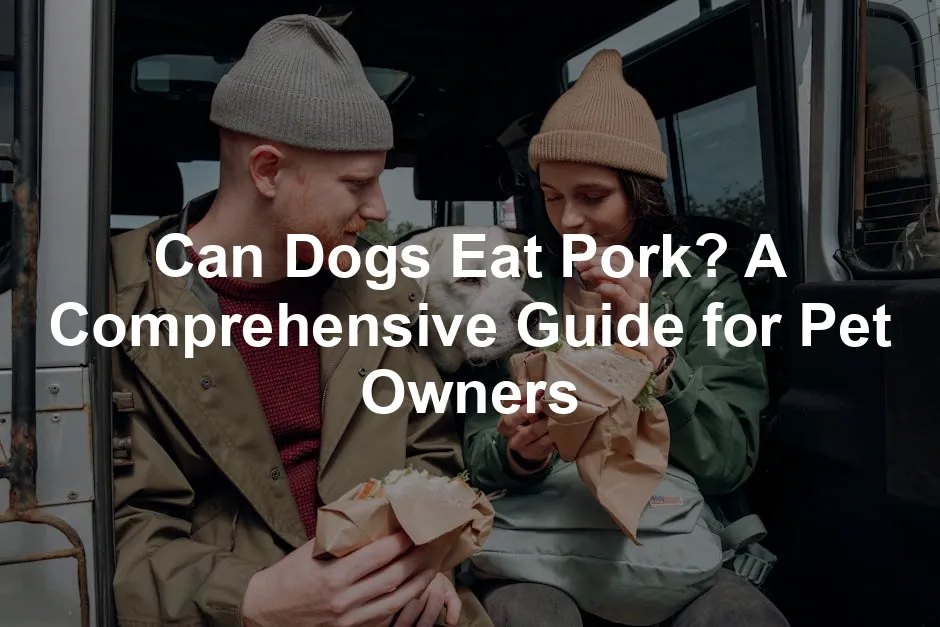Introduction
Many dog owners often wonder if pork is safe for their furry friends. This curiosity stems from the variety of pork products available and their popularity among humans. Understanding the safety and nutritional aspects of pork is crucial for making informed dietary choices for dogs. In this guide, we’ll discuss the safety of pork, its benefits, potential risks, and expert recommendations for feeding it to your dog.While pondering the complexities of canine diets, why not make your dog’s dental health a priority too? Consider adding dog dental chews to your dog’s routine. These tasty treats not only help keep their pearly whites clean but also satisfy their chewing instincts, making them a win-win!
Summary and Overview
Pork can be a safe and nutritious addition to your dog’s diet when prepared properly. Plain, cooked pork provides essential protein and nutrients. However, caution is needed regarding the type of pork and its preparation method. High-fat cuts or processed pork products like bacon and ham can pose health risks, including pancreatitis. It’s vital to avoid harmful ingredients such as garlic and onion. Always consult your veterinarian before introducing new foods into your dog’s diet, especially if your dog has specific health concerns. Being informed helps ensure your pet’s well-being while enjoying the occasional pork treat.
Understanding conditions like pancreatitis in dogs is crucial for dog owners.
Is It Safe for Dogs to Eat Pork?
Safety Considerations
Plain, cooked pork is generally safe for dogs, but preparation matters. Always avoid seasoned or processed pork. Ingredients like garlic and onion are toxic to dogs, causing severe digestive issues. Processed meats can contain high levels of salt and unhealthy fats. These can lead to pancreatitis, a serious condition that may require veterinary intervention. High-fat pork products can also upset your dog’s stomach. Dogs are prone to digestive issues, and fatty foods can exacerbate these problems. Statistics indicate that pancreatitis is a common concern, particularly in dogs that consume rich, fatty meats. Always monitor your dog for signs of discomfort after consuming pork. If you’re unsure about introducing pork into your dog’s diet, consult your veterinarian. They can provide tailored advice based on your dog’s health and nutritional needs. Keeping your furry friend safe is the top priority!
Speaking of keeping your furry friend safe, how about ensuring they stay hydrated on the go? A portable water bottle for dogs makes it easy to keep your pup hydrated during walks or trips. No more searching for a water fountain – just pop it open and let them drink!
Can I Feed My Dog Raw Pork?
Risks of Raw Pork
Feeding your dog raw or undercooked pork is risky. Raw pork can harbor a parasite called Trichinella spiralis, which causes trichinosis. This infection can lead to serious health issues for your pet. Symptoms of trichinosis in dogs include upset stomach, vomiting, diarrhea, fever, lethargy, muscle inflammation, and stiffness. If your dog shows any of these symptoms after eating raw pork, it’s crucial to consult your veterinarian immediately. To keep your dog safe, always cook pork thoroughly before serving. Avoid raw food diets that include pork, as they may not eliminate the risk of parasites. Stick to plain, cooked pork without any seasonings or additives. This ensures your furry friend enjoys a safe treat while minimizing health risks. If you notice any concerning symptoms, report them to your vet right away. Your dog’s health is paramount, so always prioritize safe feeding practices.
How Much Pork Can a Dog Eat?
Portion Control and Monitoring
When introducing pork into your dog’s diet, portion control is essential. Start with small amounts to see how your dog reacts. A few bites of plain, cooked pork are a good starting point. Monitor for any signs of allergies or digestive issues, such as stomach upset or unusual behavior. If your dog seems to tolerate pork well, you can gradually increase the portion size. However, always keep an eye on them after meals. Introduce new foods slowly to avoid overwhelming their digestive system. To track dietary changes, consider keeping a dog food diary journal. This can help you identify any potential food allergies or sensitivities. If you notice any reactions, consult your veterinarian for tailored advice. Remember, moderation is key to keeping your dog healthy and happy!
Can I Give My Dog Pork Bones?
Risks Associated with Pork Bones
Many dog owners wonder about the safety of giving their pets pork bones. However, both cooked and raw pork bones pose significant risks. Cooked bones become brittle and can splinter. These splinters can cause choking or damage to your dog’s digestive tract. This can lead to severe injuries that may require surgery. Raw bones might seem safer, but they are not without risks. They can still cause choking hazards, and harmful bacteria may be present. It’s not worth the danger. Instead of pork bones, consider safe alternatives for chewing. Dental chews, rubber chew toys, or specially designed chew bones can provide satisfaction without the risks. If you’re looking for a safe way to keep your dog entertained and their teeth clean, dental chews are a great option!
Is Processed Pork Safe for Dogs?
Concerns about Processed Meats
Feeding your dog processed pork products like bacon, ham, or sausages can be harmful. These foods often contain high levels of salt and unhealthy fats. A diet high in sodium can lead to increased thirst and potential health issues, such as bloat. This is especially dangerous for large breed dogs. The World Health Organization has classified processed meats as carcinogenic. This means they may increase the risk of cancer in both humans and pets. Therefore, it’s wise to avoid giving your dog these options. Instead, opt for fresh, unseasoned meats. Lean cuts of pork, cooked without additives, can be a healthier choice and a tasty treat for your furry friend. Always prioritize your dog’s health by steering clear of processed options! And while you’re at it, consider investing in a dog food storage container. Keeping your dog’s food fresh and safe from pests is just as important!
Benefits of Pork for Dogs
Nutritional Value
Pork can be a nutritious addition to your dog’s diet. It offers high-quality protein, crucial for muscle growth and repair. This meat also contains essential vitamins such as B vitamins, which support energy levels and overall health. When considering pork, lean cuts like loin or tenderloin are ideal. These parts have less fat and can be easier on your dog’s digestive system. Avoid fatty cuts, as they can lead to health issues. Including pork in moderation can provide a tasty treat that many dogs enjoy!
Alternatives to Pork
Other Protein Sources
If you’re looking for alternatives to pork, several other protein sources are safe for dogs. Chicken is a popular choice, rich in protein and easy to digest. Turkey is another great option, providing lean meat with essential nutrients. Consider wild boar as well, which is lean and offers a unique flavor. It’s a novel protein that can be beneficial for dogs with food sensitivities. Diversifying your dog’s protein intake can enhance nutrition and prevent food monotony. Always ensure any meat is cooked plainly and free from harmful additives. For a balanced diet, explore various safe options to keep your dog happy and healthy! And speaking of health, consider using dog wellness supplements to support their overall health!
How Should I Prepare Pork for My Dog?
Preparation Guidelines
When preparing pork for your dog, safety is key. Start with lean cuts like pork loin or tenderloin. Trim any visible fat to reduce the risk of gastrointestinal issues. Always cook the pork thoroughly to kill harmful bacteria and parasites. Boiling, baking, or grilling without added fats is ideal. Avoid frying, as it adds unnecessary grease. Additionally, skip the seasonings. Ingredients such as garlic and onion are toxic to dogs. Instead, serve plain pork to keep your dog safe. If you want to add flavor, consider using safe herbs like parsley or mint. And while you’re at it, consider investing in a dog grooming brush to keep your pup looking sharp while you whip up their meals!
Conclusion
In summary, pork can be a safe and nutritious treat for dogs when properly prepared. Always opt for lean cuts and avoid seasoning. Monitor your dog for any signs of digestive upset after introducing pork. Moderation is crucial, and it’s best to consult your vet before making dietary changes. Stay informed and cautious about your dog’s diet to ensure their health and happiness. And don’t forget to check out a dog first-aid book to be prepared for any unexpected situations!Please let us know what you think about our content by leaving a comment down below!
Thank you for reading till here 🙂
All images from Pexels





